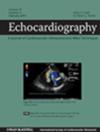Evolution and Prognostic Impact of Left Ventricular Myocardial Work Indices After Transcatheter Aortic Valve Replacement in Patients With Severe Aortic Stenosis
Abstract
Purpose
Left ventricular myocardial work (LVMW) has been shown to better characterize LV function in patients with severe aortic stenosis by correcting LV afterload. The aim of this study was to evaluate the evolution in LVMW indices after transcatheter aortic valve replacement (TAVR) and their prognostic value.
Methods
The following LVMW indices were calculated before and immediately after TAVR in 255 patients (median age 82 years, 51% male): global work index (GWI), global constructive work (GCW), global wasted work (GWW) and global work efficiency (GWE). The study endpoint was all-cause mortality.
Results
After TAVR, LV ejection fraction and LV global longitudinal strain (GLS) did not change significantly (from 56% to 55%, p = 0.470 and from 13.6% to 13.2%, p = 0.068). Concerning LVMW indices, while LV GWW remained unchanged after TAVR (from 247 to 258 mmHg%, p = 0.080), LV GWI, LV GCW, and LV GWE significantly decreased (from 1882 to 1291 mmHg%, p < 0.001, from 2248 to 1671 mmHg%, p < 0.001, and from 89% to 85%, p < 0.001, respectively). During a median follow-up of 59 [40–72] months, 129 patients died. After correcting for potential confounders (sex, diabetes, renal function, atrial fibrillation, Charlson comorbidity index, and pacemaker implantation post-TAVR), post-TAVR LV GLS, GWI, and GCW remained independently associated with all-cause mortality. However, post-TAVR LV GWI demonstrated the highest increase in model predictivity.
Conclusion
In patients undergoing TAVR, LVMW parameters significantly change after intervention. LV GWI after TAVR showed the strongest association with all-cause mortality among both conventional and advanced parameters of LV systolic function both pre- and post-TAVR and might enable better risk stratification of these patients after intervention.

 求助内容:
求助内容: 应助结果提醒方式:
应助结果提醒方式:


